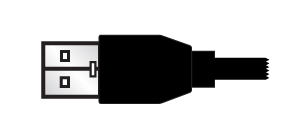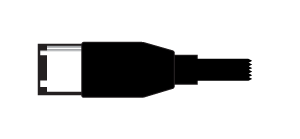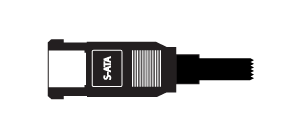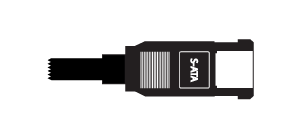User Tools
Site Tools
Table of Contents
Cables and Connectors
USB 2.0
USB is a serial input/output technology for connecting peripheral devices to a computer or to each other. Hi-Speed USB 2.0 is the second-to-latest implementation of this standard, and it provides the necessary bandwidth and data transfer rates to support high speed devices such as hard drives, CD/DVD drives and digital cameras.
Your LaCie product is shipped with a Hi-Speed USB 2.0 cable to ensure maximum data transfer performance when connected to a Hi-Speed USB 2.0 port. The cable will also work when connected to a USB 1.1 port, but performance will be limited to USB 1.1 transfer rates.
FireWire 400
FireWire 400, also known as IEEE 1394, is specifically aimed at multimedia peripherals such as digital video camcorders, CD-RW drives, DVD drives and hard drives.
FireWire is also a point-to-point interface, meaning that a FireWire device can transmit data to another FireWire device without having to go through a computer. This lets several computers share a given device, and also allows up to 63 devices to be daisy-chained to the same FireWire bus (with a max of 16 devices on one branch).
FireWire 800
FireWire, also known as IEEE 1394, is a high-speed serial input/output technology for connecting peripheral devices to a computer or to each other, and FireWire 800 is the implementation of the new IEEE 1394b standard.
FireWire 800 offers increased bandwidth and extended distance between devices. FireWire 800 is ideal for bandwidth-intensive applications, such as audio, video and graphics.
| Connector Face (to computer) | Cable End (to computer) | Cable End (to product) | Connector Face (to product) |
|---|---|---|---|
 | 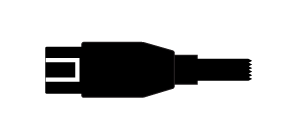 | 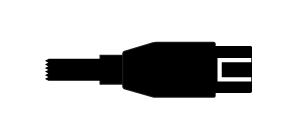 |  |
eSATA
Your LaCie product offers the latest in SATA technology, allowing interface (or bus) transfer rates of up to 3 Gbits/s. SATA technology was originally developed to serve as an internal interface, delivering improved performance to internal connections.
Soon after, eSATA, or external SATA was developed, allowing for the use of shielded cables outside the PC. eSATA technology was developed to be rugged and durable. eSATA connectors do not have the “L” shaped design of other SATA connectors. In addition, the guide features are vertically offset and reduced in size to prevent the use of unshielded internal cables in external applications.

 Print page
Print page Save page as PDF
Save page as PDF



